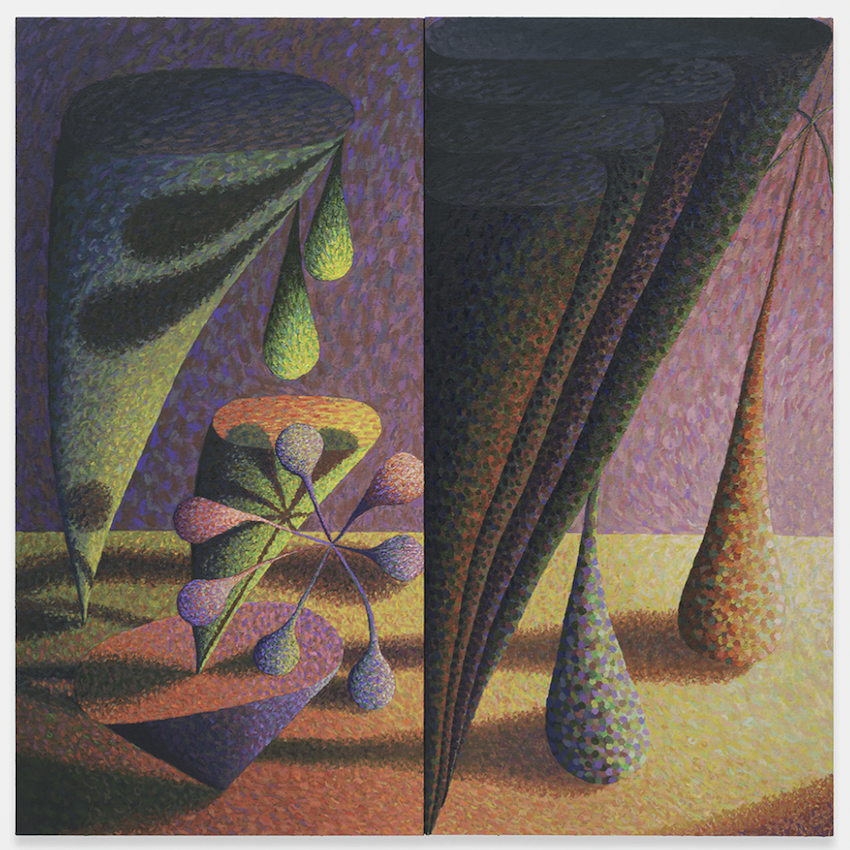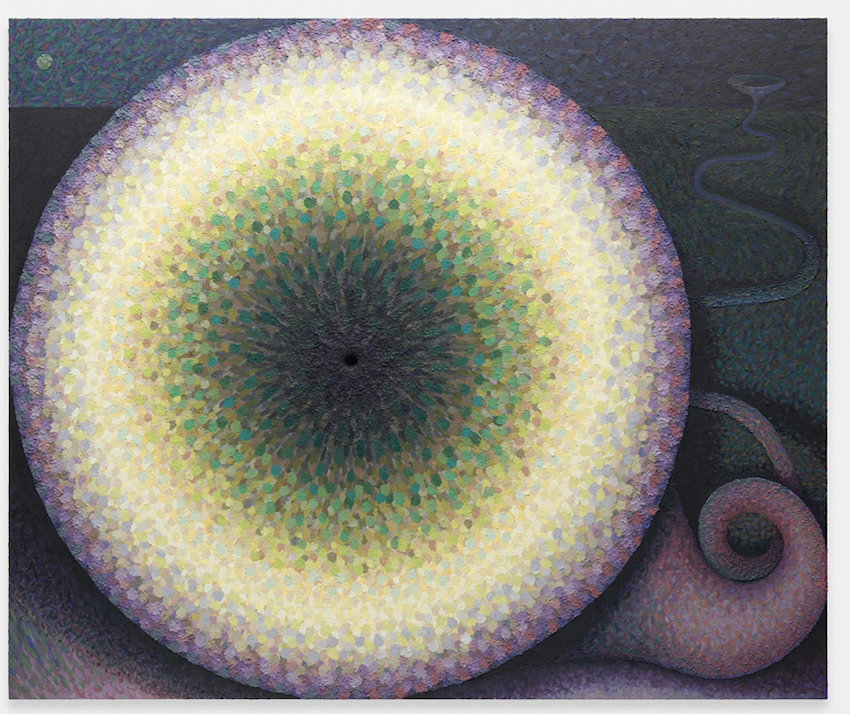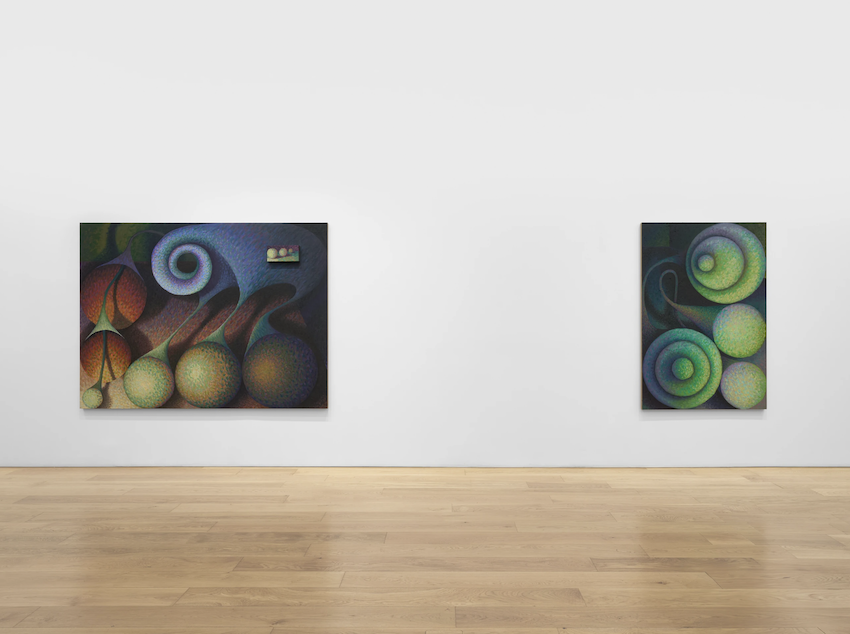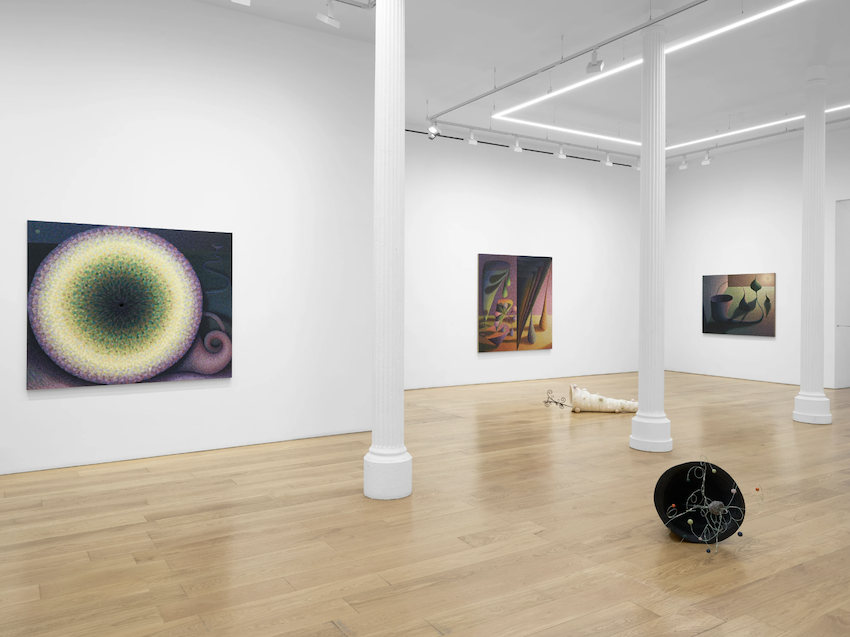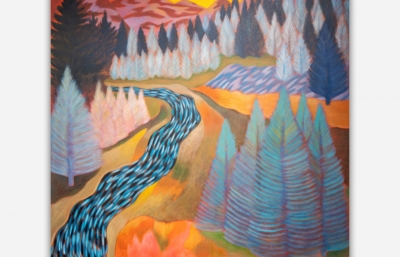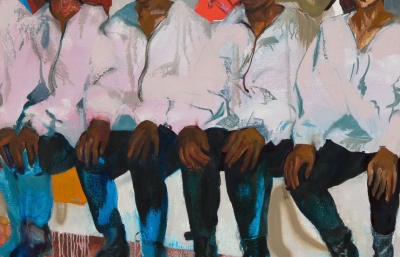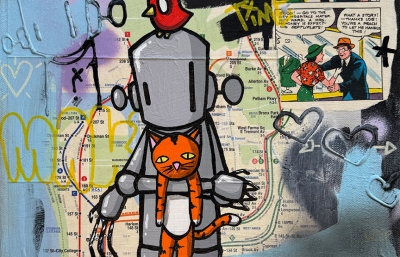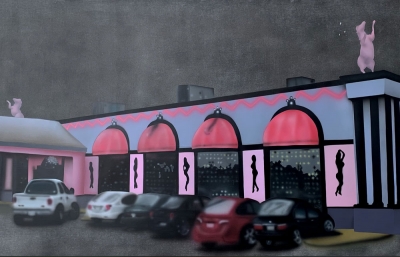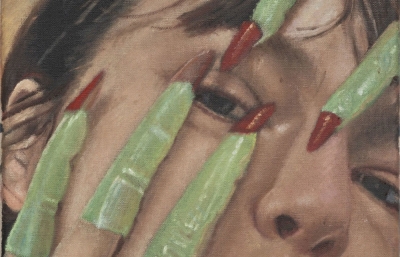Timothy Taylor is pleased to present Rude Awakening, a solo exhibition of new paintings, sculptures, and drawings by Alicia Adamerovich at the gallery’s New York location. The artist’s debut exhibition in the city and with the gallery, this presentation features enigmatic biomorphic abstractions that reflect on our moment’s uncertain relationship to truth and objective reality.
Adamerovich uses paint, pumice, sand, and wood to process absurd or contradictory feelings and thoughts. Sparked by mundane encounters with an intriguing shape, phrase, or angle of light, she works intuitively, generating moody, shadowy landscapes in two and three dimensions. Raised in western Pennsylvania by her naturalist father and biologist mother, Adamerovich grew up contemplating and drawing the natural world as well as examining its minutiae through a microscope. The organic, geologic, and mathematical forms she observed as a child recur and mutate across her work, reflecting their presence in her subconscious. Shapes that recall protozoa, seedpods, and fractals intermingle in surprising ways.
Over the past two years, she has developed a style of pointillist mark-making that introduces a vivid sense of animation to her compositions, such that the shapes and atmosphere alike appear to be breathing or staticky. The works in Rude Awakening are marked by subdued chaos; Adamerovich has described a sense of precariousness that underlies her recent output, reflecting her distrust of contemporary political and cultural narratives around the climate, human rights, consumerism, and journalistic integrity. The eight paintings presented here heavily feature forms that suggest conveyance—funnels, tubes, capillaries, horns, syphons, sacks, and drops of rain. These shapes inhabit barren stage-like spaces delineated by sharp horizons and invite readings that slip between recognition and alienation.
Adamerovich works on her sculptures as she paints, allowing the development of each to inform the other. For some of the sculptures on view at Timothy Taylor, she sourced fallen trees from her parents’s land, chiselling the wood in response to its natural contours. Others are hewn from plywood, which she builds and carves instinctually, as in Surrealist automatism. These works embody the same contrasts the artist reckons with in paint—they are at once geometric and eccentric, meandering and inevitable, uneasy and robust.



